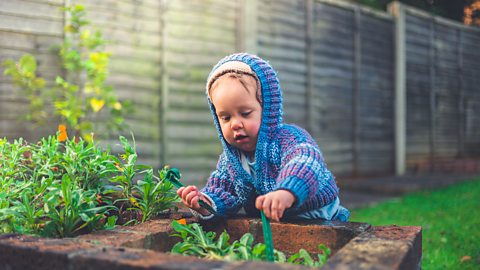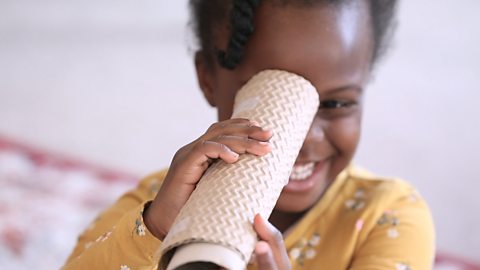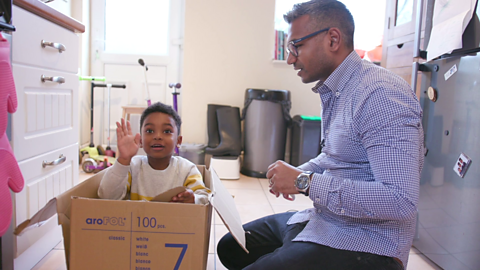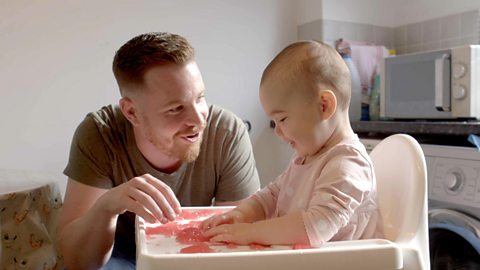As they grow and develop, your child will play in lots of different ways. Psychologists and experts have identified a number of styles of play that children engage in, which are key parts of their development.
ãPlay is inextricably linked to other areas of your childãs holistic development,ã explains Gaynor Rice, an early years professional. ãThis means things like their social, emotional and physical development, as well as their speech and language.ã
As your child reaches their developmental stages they will start to display some of these recognised types of play and, as they grow, they might mix and match them based on their personality, mood and interests.
ãOlder children may play in three or four different ways in one day,ã explains Gaynor, ãand every child will play differently.ã

What is play? And why is play important for children?
ãPlay is childrenãs work,ã says Gaynor. ãIt helps children discover the world around them and learn about it - itãs so valuable.ã
Play can take many forms, from imaginative games to physical activities, to stacking blocks or even - as a newborn - kicking their legs playfully. There are so many different types of play that no child plays the same way as another.
As your child grows, their attention span and physical skills develop. Your child will get more creative and explore new games and ideas. They might play for longer periods of time or need more space to explore.
ãItãs so fascinating to watch your childãs play develop.ã
ãBy following their interests, youãll be able to observe how the way they play changes every day, week or month as they learn new things and understand more about how the world works,ã says Gaynor.
Your child might love playing with you on some days but prefer to spend time alone on others. They might ask you for ideas or tell you about their games. And sometimes your child might want to play with other children ã no adults allowed!
When children play, they engage their imagination, problem-solving skills, and creativity. Play helps them navigate social interactions, take turns, negotiate, and cooperate. They also learn about storytelling.
Active play is good for developing motor skills and hand-eye coordination, as well as improving fitness.
Below weãve listed 6 different play styles young children exhibit as they grow and develop. ãOnce your child picks up the next style of play, they wonãt necessarily stop playing in the old ways,ã explains Gaynor. ãAlthough there is usually a predominant style, they can pick and choose from all the different stages of play depending on their circumstances.ã
6 different styles of play
1. Unoccupied Play
Unoccupied play may not look like play at all. Unoccupied play is when newborns and infants use their senses to explore the world and their place in it.
Kicking their legs, trying tummy time or putting their hands and feet into their mouths are some examples of unoccupied play.
ãThese are the beginnings of play,ã explains Gaynor. ãTheyãre learning by exploring and figuring out how their body moves, what they can and canãt do and what happens when they do certain things.ã
Giving your child space to move their body is a valuable way to help them explore at this stage.
Play is really important in the newborn phase - lots of everyday activities with your baby could be considered ãplayã for them.
2. Solitary Play
At this stage of play, children will play alone without interaction with others. At this stage, your little one is still trying to figure out their place in the world and their impact on the environment.
Your child may play with toys, stack blocks, or read books. Theyãll touch, taste and play with any object that catches their attention, and might even talk out loud as they do it.
ãThis type of play is more common in younger children, who have not yet developed sufficient social skills to interact with other children yet,ã explains Gaynor. ãBut you might also see it in older children whose social batteries are drained, or who are feeling overwhelmed."
ãIf your child is shy, you might find that they default to a more solitary play style more often."
There is so much for children to learn during this stage through simple activities, such as looking in a mirror, stacking blocks or banging out a rhythm.

3. Spectator / Onlooker Play
Spectator play is just like it sounds - children watch and observe others, without joining in themselves.
This is a really interesting phase as your child learns so much from watching other children. As well as learning some of the ãsocial rulesã around play and how to set it up, theyãre also getting to know how to interact with others.
These are all skills they will take with them as they move on to further stages of play.
ãThis stage tends to be associated with younger children,ã explains Gaynor, ãbut can also be linked to confidence.ã
ãOlder children may initially prefer to spend time on the edges of a group, especially if theyãre in a new setting. And even when they settle, they are sometimes happy to take time out from group play and simply watch what their friends are doing.ã
Find out more about how your babies vision develops and how you can tell if your baby might need glasses.
4. Parallel Play
ãThis is one of the most fascinating stages of play,ã says Gaynor. "At this stage, children play alongside each other with little to no engagement.ã
They might have a small chat, observe one another and even copy what the other is doing. However, they arenãt playing together to achieve a mutual goal.
ãThis is a natural evolution from onlooker play, as children go from being on the edge to being closer to the action. Itãs strongly linked to your childãs social development, as at this stage they are not yet ready to share or take turns with others.ã
As a parent, you might be tempted to encourage children to play together during this type of play, but your child picks up lots of crucial information through this interaction.

5. Associative Play
It is during this fifth stage of play when children interact and chat with each other.
Theyãll still be focused on their own ideas and goals. However, they will chat with the other children around them and share toys or other materials as they go.
Examples of this are playing with playdough, painting a picture or climbing at the playground.
This type of play can only happen when your childãs language and social skills are at a certain level. Every child will reach this stage at different times.
But this doesnãt mean that children wonãt prefer to play alone at certain points after theyãve reached this stage. It all depends on how they feel and their mood.
6. Cooperative Play
Cooperative play is when childrenãs play becomes more complex and interactive. And what they learn during this type of play is something children will use later in life when they go to school, do group work and get a job.
When children play cooperatively, they work together towards a common goal. The play may have rules and a purpose.
Imaginary play, like playing house or sailing a pirate ship is an example of this style of play. But it can take many forms.
ãIn cooperative play, children are more empathetic towards others' needs," Gaynor. ãTheir play is usually sophisticated and intricate. Try to follow your childãs lead if you are playing with them.ã
It is in this style of play that children really practise their communication, social and cooperation skills.
Every child is different and prefers certain play styles over others. You know your child best.
If there is something that concerns you about the way they play, especially if itãs linked to other areas of their development, talk to your childãs health visitor or nursery practitioner.






